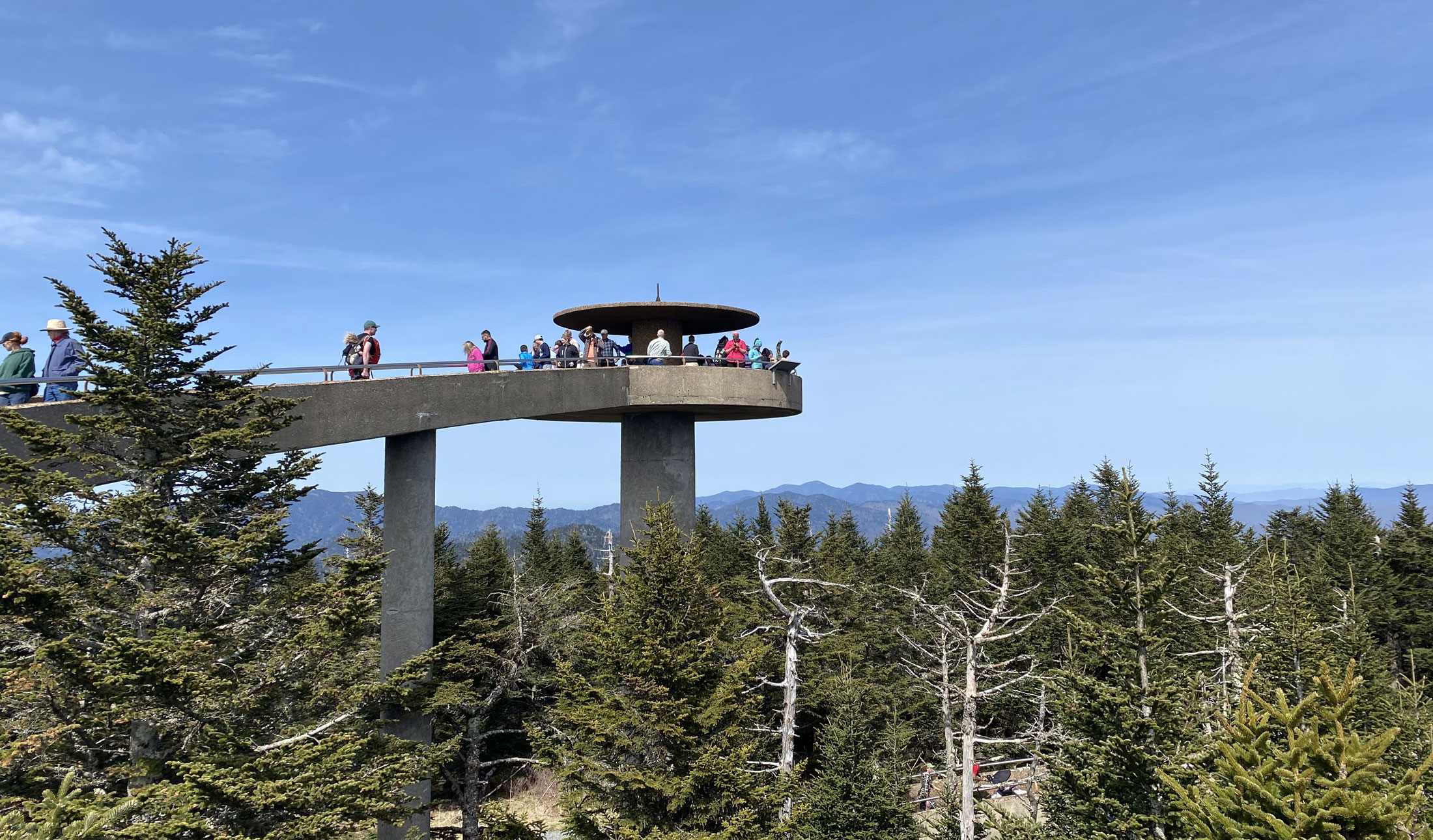
As I walked across the top of Fontana Dam, a light drizzle began to fall. It was the spring of 2022, and my mom Candy and I had been anticipating our entry into Great Smoky Mountains National Park for the past three weeks as we made our way north on the Appalachian Trail from the trail’s start at Springer Mountain in Georgia.
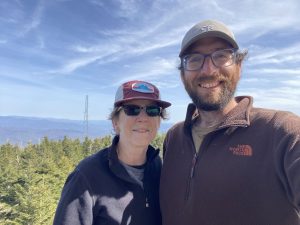
We had endured snow along the Georgia/North Carolina border and were hopeful that temperatures wouldn’t drop below freezing again. But we knew that the Smokies would be a challenge, and we felt ready for whatever they might throw at us.
I was thinking about more than just the weather. I was also looking for tales of the land. I began my 2022 AT thru-hike attempt with plans to produce a documentary-style podcast and radio series about this iconic trail. Part of the story that I’d tell in the podcast would be focused on our personal journey along the AT. But the podcast would also be designed to explore the origin story of this 2,200 mile-long footpath, so I was on the lookout for stories about the land and the people who have made it their home. (You can listen to the trailer for my AT podcast here.)
One of the story ideas that I had begun to obsess over as I entered the Smokies was the idea that the Appalachian Trail might directly overlap historic Cherokee footpaths. I couldn’t find any information on this topic from the Appalachian Trail Conservancy or the National Park Service. But before entering the Smokies I’d connected with two experts on Cherokee trails—Gil Jackson and Lamar Marshall.

Gil and Lamar have been working together for more than ten years documenting historic trail systems and sacred sites all throughout Southern Appalachia. Just before we entered the Smokies, Lamar shared the location of one specific stretch of the AT that he had documented as overlapping a historic Cherokee trail. When I walked this section, my perspective shifted. I was beginning to realize that the history of the Appalachian Trail started long before Benton MacKaye wrote his famous article in 1921 that kicked off efforts to create it. So as I entered Great Smoky Mountains National Park I was starting to imagine a much deeper history of the trail.
The light rain was actually rather pleasant as we entered the park and began the climb up to Shuckstack, the first major peak that northbound AT hikers ascend in the park. There were no views from the Shuckstack fire tower—we were deep in a layer of fog. The rain continued to fall, and we continued walking until we reached Mollies Ridge Shelter at the end of the day.
At Mollies Ridge, we found a group of about a dozen thru-hikers huddling under the overhang of the shelter. There was already a fire built in the shelter’s stone fireplace—a rare luxury on the trail. Most AT shelters are simple, three-walled lean-tos, but shelters in the Smokies are special. Most have a second bunk, doubling the capacity, and many, like Mollies Ridge, have beautiful stone fireplaces.
Only two spots remained in this two-story lean-to: one on the top level and one on the bottom. I grabbed the spot on the top bunk and began to unfurl my sleeping bag. My mom and I were both soaked, and the temperature was dropping fast. So after changing into dry clothes, we got our stove going and quickly assembled our dinner. By the time daylight was fading, we were tucked into our warm sleeping bags as the temperature plummeted below freezing. While we had been hoping to avoid another cold snap, we were extremely grateful for the comfort of the shelter and were soon fast asleep.
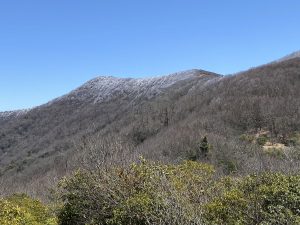
Just a few hours later, we experienced a rude awakening. At some unknown hour in the dark night, the sound of hysterical crying wracked the air. A hiker had stumbled into the shelter, delirious with hypothermia. When he saw that there was no room for him in the lean-to, he collapsed onto the ground and started bawling uncontrollably.
Several hikers jumped into action, popping out of their sleeping bags to help. I watched from the top bunk as these folks got the newly arrived hiker out of his wet clothes and into his sleeping bag. Everyone on the bottom bunk, including my mom, scooted over to make room, and soon the commotion was over. The hypothermic hiker ended up sleeping right alongside my mom, and the next morning she told me that he was shaking violently all through the rest of the night. But he survived, and by the morning he was coherent and ready to keep walking.
Being on the AT can make you feel like you’re stepping back into a different time, and our experience at Mollies Ridge epitomized this feeling. Hikers in the Smokies and elsewhere along the AT rely on strangers in a way that has become rare within our larger society. If that hiker hadn’t made it to Mollies Ridge Shelter that night, he almost surely would have died. Like all of us, he was relying not just on himself, but on the wider community of AT hikers to get him through his journey. Sure, he made some bad decisions, but haven’t we all?
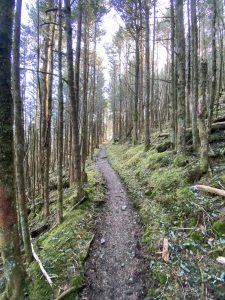
As my mom and I continued through Great Smoky Mountains National Park, we found more evidence of the trail’s deep history. A couple days after our night at Mollies Ridge, we started making our way up the AT’s tallest peak. Back in 2022 this mountain was officially known as Clingmans Dome, but a couple of activists from the Eastern Band of Cherokee Indians were trying to change that. I spoke with Lavita Hill, one of these activists, for my podcast series.
Lavita was working to re-establish the original Cherokee name for this mountain, Kuwohi. This campaign was motivated, in part, by a desire to share the mountain’s largely untold history with the hundreds of tourists who visit the area daily. Lavita explained to me that although Kuwohi has always been a sacred mountain to the Cherokee people, it took on added significance during the forced removal of Cherokees in the 1830s. Kuwohi is where some Cherokee people hid to avoid the Trail of Tears, dealing with incredibly harsh conditions.
In September 2024, the mountain’s name was officially changed back to Kuwohi. My hope is that this restoration will awaken some of the same curiosity in park visitors that I felt as I walked through these ancient and historic mountains.
I entered Great Smoky Mountains National Park imagining ancient footpaths overlapping the AT. By the time I left, I understood that the trail’s history is much more complex. It isn’t just historic trails that overlap the AT, but a rich and complicated past that is often obscured by modern society.
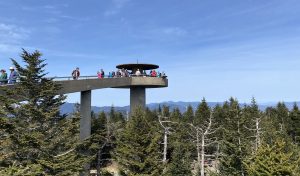
By sharing these stories in my podcast series, I hope to share the sense of timelessness and awe that I felt while walking though the Smokies. These mountains help us peer into the past and allow us to see the present in a new light.
Common Land is a podcast and radio series about the Appalachian Trail produced by the Wild Lens Collective in partnership with New Hampshire Public Radio. Learn more and listen to episodes at commonlandpodcast.com. Episode two of Common Land takes place in Great Smoky Mountains National Park. You can listen to this episode in Apple Podcasts, Spotify, or via the embedded player below
Subscribe to get the latest posts sent to your email.
The Great Smokies Welcome Center is located on U.S. 321 in Townsend, TN, 2 miles from the west entrance to Great Smoky Mountains National Park. Visitors can get information about things to see and do in and around the national park and shop from a wide selection of books, gifts, and other Smokies merchandise. Daily, weekly, and annual parking tags for the national park are also available.